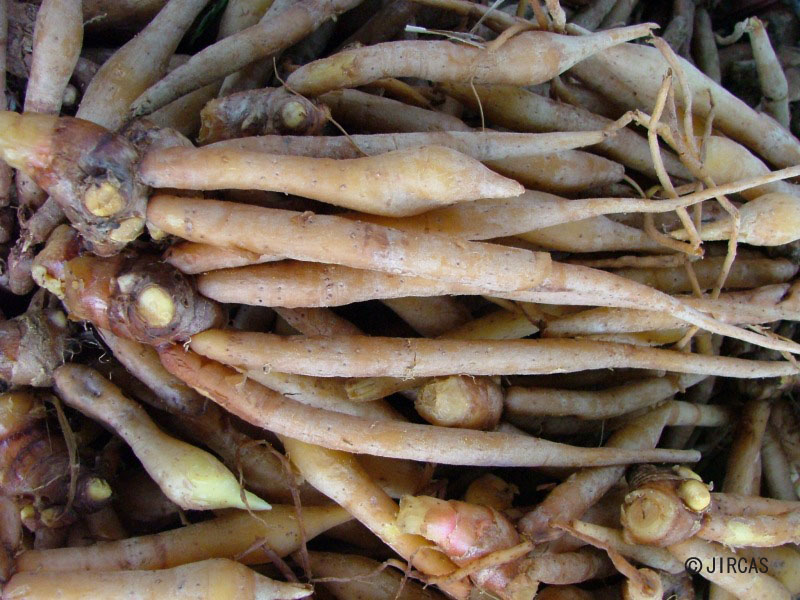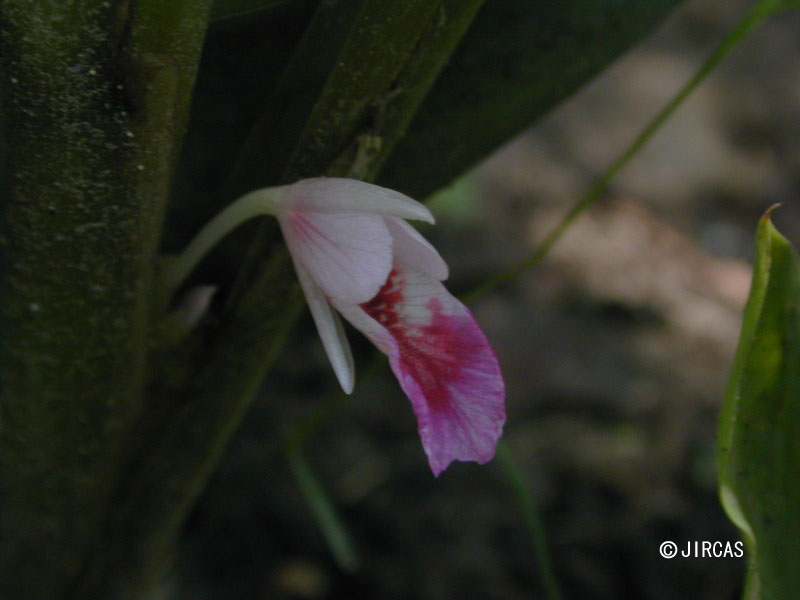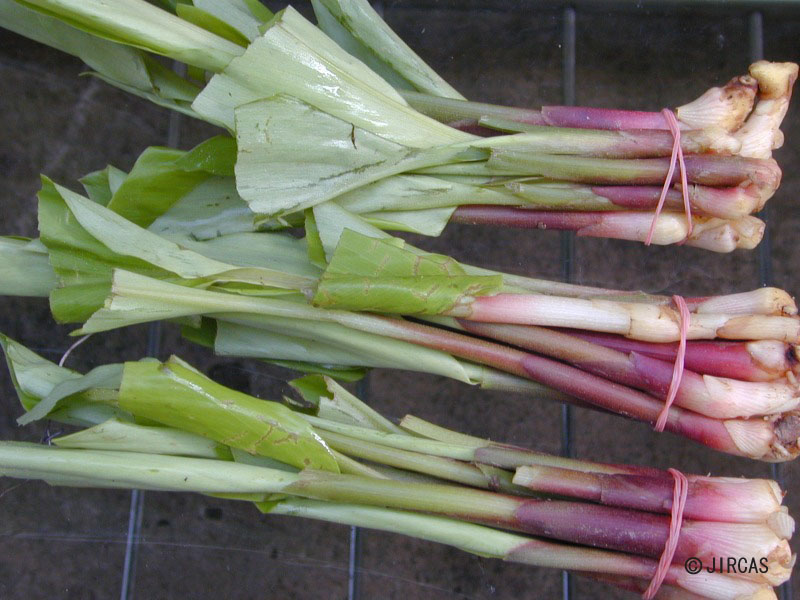Boesenbergia rotunda (L.) Mansf. (Zingiberaceae)
- Scientific name
- Boesenbergia rotunda (L.) Mansf. (Syn. B. pandurata Schult.)
- Family name
- Zingiberaceae
- Common name
- Chinese key, fingerroot (English); obangajutsu (Japanese)
- Local name
- Krachaai
Perennial herb, 30–50 cm tall. Rhizome a slender, cylindrical, light brown storage root, acute at the tip, 6–10 cm long, c. 1 cm wide; yellow inside, aromatic. Leaves rosettes 3–4, laminar elliptic, acute, slightly hairy along the midrib, 10–30 cm long, 5–10 cm wide. Petiole 5–12 cm long. Inflorescence terminal, pauciflorous; bracts linear-lanceolate, up to 5 cm long, each subtending 1 flower. Flowers with corolla tube exceeding the bract; lobes 1.5 cm long, white or pink. Fruit ellipsoid.
Commonly grown in backyard gardens under light shade or full sun. Naturally occurring in bamboo or mixed deciduous forest on hillslopes at mid- to low elevations. Propagated mainly by dividing rhizomes and planting each piece in a hole or trench at a spacing of c. 15–20 × 25–30 cm at the start of the rainy season (May). Roots are ready for harvest at 8 months after planting or when the aerial part turns yellow and collapses.
Rhizomes are used as a spice in a wide variety of dishes, including kaeng liang (Thai mixed vegetable soups), curries such as kaeng kee lek (cassod tree ( Senna siamea ) curry), ho mok (steamed fish curry with coconut milk, wrapped in banana leaves), phat phet pla duk (spicy stir-fried catfish), or khanom chin nam yaa (fermented rice noodle with spicy sauce).
Rhizomes are used as a spice in a wide variety of dishes, including kaeng liang (Thai mixed vegetable soups), curries such as kaeng kee lek (cassod tree ( Senna siamea ) curry), ho mok (steamed fish curry with coconut milk, wrapped in banana leaves), phat phet pla duk (spicy stir-fried catfish), or khanom chin nam yaa (fermented rice noodle with spicy sauce).






